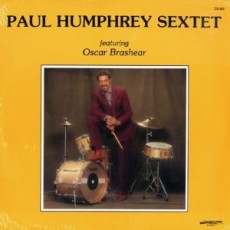
Daily Dose Of Jazz…
Arthur Stewart Farmer was born August 21, 1928, an hour before his twin brother, in Council Bluffs, Iowa. Their parents, James Arthur Farmer and Hazel Stewart Farmer, divorced when the boys were four, and their steelworker father was killed in a work accident not long after. He moved with his grandfather, grandmother, mother, brother and sister to Phoenix, Arizona when he was still four. He began playing piano while in elementary school, then moved on to bass tuba and violin before settling on cornet and then trumpet at the age of thirteen. He taught himself to read music and practiced his new main instrument, the trumpet.
Farmer and his brother moved to Los Angeles in 1945, attending the music-oriented Jefferson High School where they got music instruction and hung out with other developing musicians such as Sonny Criss, Ernie Andrews, Big Jay McNeely and Ed Thigpen. By sixteen he was playing trumpet professionally, performing in the Horace Henderson, Jimmy Mundy and Floyd Ray bands, among others.
Art left school to tour with a group led by Johnny Otis, but this job lasted for only four months, as Farmer’s lip gave out, becoming lacerated through underdevelopment of his technique. He then received technique training in New York, auditioned unsuccessfully for Dizzy Gillespie and returned to the West Coast in 1948 as a member of Jay McShann’s outfit.
Farmer played and toured with Benny Carter, Wardell Gray, Roy Porter and Gerald Wilson in the early 50s.He would record his first studio session with Big Joe Turner and Pete Johnson, and gained great attention with his piece titled “Farmer’s Market”. He joined Lionel Hampton’s orchestra, toured Europe, became a member of Teddy Charles’ New Directions band, relocated to New York and in 1953, had his first recording session as leader for Prestige titled The Art Farmer Septet.
Over the course of his career he has worked with Quincy Jones, Gigi Gryce, Horace Silver, Gerry Mulligan, Thelonious Monk, and Charles Mingus, appeared on the Steve Allen show, Newport Jazz Festival, and two films – I Want To Live and The Subterraneans. As a member of Jazz at the Philharmonic he toured Europe again, that helped him gain an international reputation. He formed the Jazztet with Benny Golson, assited the careers of McCoy Tyner and Granchan Moncur, appeared in the photo Great Day In Harlem, recorded prolifically and led groups through the Sixties, and took a job in the orchestra pit on Broadway as jobs in jazz dried up.
He would settle in Vienna and divide his time between Europe and New york, revive the Jazztet with Golson, form a quintet with Clifford Jordan as a member, lost 30 pounds, quit smoking and drinking, avoided drugs, performed regularly, was awarded the Austrian Gold Medal of Merit, and was selected as a National Endowment for the Arts Jazz Master in 1999. A few months later on October 4, 1999 bebop trumpeter, flugelhorn and flumpet player and bandleader Art Farmer passed away of a heart attack at his New York Manhattan home. He was 71.
More Posts: flugelhorn,flumpet,trumpet

Daily Dose Of Jazz…
Frank Rosolino was born on August 20, 1926 in Detroit, Michigan. He studied the guitar with his father from the age of 9 and took up the trombone at age 14 while he was enrolled at Miller High School where he played with Milt Jackson in the school’s stage band and small group. Having never graduated, he joined the 86th Division Army Band during World War II.
Perhaps most influential of all was the street education Frank received after returning to Detroit following his period in the Army during which he sat in at the Mirror Ballroom or the Bluebird where other to-be-renowned musicians also congregated, the Jones brothers – Hank, Thad and Elvin, Tommy Flanagan, Kenny Burrell, Paul Chambers and later at the 3 Deuces on 52nd Street in New York City with Charlie Parker.
During this period Rosolino was also performing with the big bands of Bob Chester, Glen Gray, Tony Pastor, Herbie Fields, Gene Krupa and Stan Kenton. Leaving the Kenton outfit he settled in Los Angeles where he performed with Howard Rumsey’s Lighthouse All-Stars from 1954–1960 in Hermosa Beach.
Throughout the 1960s and 1970s, between nightclub engagements, Rosolino was active in many Los Angeles recording studios where he performed with such notables as Frank Sinatra, Sarah Vaughan, Tony Bennett, Peggy Lee, Mel Torme, Michel Legrand and Quincy Jones among others.
He can also be seen performing in “Sweet Smell of Success” in 1957 with Burt Lancaster and Tony Curtis, and in 1958 with Shelly Manne’s group in the film “I Want To Live!” starring Susan Heyward and also. He was also a regular on The Steve Allen Show, The Tonight Show and The Merv Griffin Show. A talented vocalist, renowned for his wild form of scat-singing, Frank recorded one vocal album, “Turn Me Loose!” featuring both his singing and trombone playing. He can also be seen performing in the half hour syndicated program Jazz Scene USA, hosted by Oscar Brown, Jr.
It was during the 1970s that he performed and toured with Quincy Jones and the Grammy Award winning group Suoersax. He recorded some two-dozen sessions as a sideman and a dozen as a leader. Trombonist and vocalist Frank Rosolino committed suicide on November 26, 1978 after shooting his two sons.

Daily Dose Of Jazz…
Lyle Stephanovic was born Miko Stefanovic to Serbian émigré parents in Berlin, Germany on August 19, 1908. Better known in the jazz world as Spud Murphy, he grew up in Salt Lake City, Utah where he took the name of a childhood friend. Murphy studied clarinet and saxophone when young and took trumpet lessons from Red Nichol’s father.
He worked with Jimmy Joy in 1927-28 and with Ross Gorman and oboist Slim Lamar in 1928. He worked the early 1930s as saxophonist-arranger for Austin Wylie, Jan Garber, Mal Hallett and Joe Haynes, and then became a staff arranger for Benny Goodman from 1935 to 1937. At the same time he also contributed charts to the Casa Loma Orchestra, Isham Jones, Les Brown and many others.
From 1937 to 1940 Murphy led a big band and recorded for Decca and Bluebird Records in 1938-39. In the 1940s he relocated to Los Angeles where he did work in the studios and with film music, in addition to authoring and teaching the 1200-page “System of Horizontal Composition” also known as the “Equal Interval System”. The Equal Interval System is a modern system of music composition, developed by Murphy over a lifetime of research.
Spud recorded two jazz albums in the 1950s, but his later career was focused on classical and film music. In 2003, orchestra leader Dean Mora, a close friend of Murphy’s, recorded some two dozen of his arrangements in a tribute CD, “Goblin Market”.
Multi-instrumentalist, bandleader and arranger Spud Murphy died in Los Angeles, two weeks short of his 97th birthday on August 5, 2005.

Daily Dose Of Jazz…
Oscar Brashear was born August 18, 1944, in Chicago, Illinois. After studying at trumpet and music at DuSable High School and Wright Jr. College under John DeRoule, he worked briefly with Woody Herman before going on to join Count Basie from 1968-69, then returning to freelance in Chicago. There her worked with Sonny Stitt, Gene Ammons, Dexter Gordon and James Moody.
A move to Los Angeles in 1971, he worked with Gerald Wilson, Harold Land, Oliver Nelson, Shelly Manne, Quincy Jones, Horace Silver and Duke Pearson.
To date Brashear has contributed to more than five-dozen recording sessions with Teddy Edwards, Jimmy Smith, Sonny Rollins, Benny Golson, Bobby Hutcherson,, B.B. King, Bobby Bland, Freddie Hubbard, Joe Farrell, The Crusaders, McCoy Tyner, Gene Harris, Earth Wind and Fire, Carole King, Ry Cooder and Frank Sinatra among many others. He continues to perform and record as a session player.
More Posts: trumpet

The Jazz Voyager
Jazzablanca Festival: Rue Lice d’Anfa, Casablanca, Morocco / Telephone: 06 01 02 98 78 / Email: info@jazzablanca.com / www.jazzablanca.com
Jazzablanca returns in late March to early April 2015 for a week of music, discovery and sharing. The festival has expanded to include music and entertainment in various areas of the city. A large parade is usually held on the Corniche and launches the festivities to meet Casablancans and visitors of all ages. Every evening concerts highlighting the Moroccan scene will set the pace amongst national and international acts. Young artists train each year for four weeks and will perform on Sunday on the main stage. Check the website as the festival dates near to see the schedule artists, dates, times and locations.
Sponsored By



